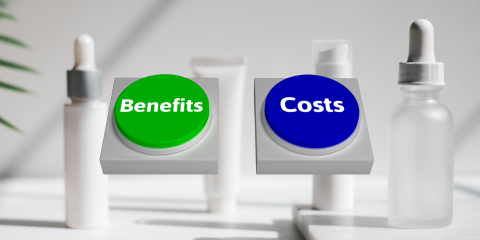Topics: Implementation, Optimize, KPI, Pricing, APS, control design, analytics

As an operations director in a packaging manufacturing facility, it is imperative to make informed decisions about the production processes that will improve the company's bottom line. One of the most effective tools for evaluating the feasibility of different production strategies is cost-benefit analysis. A cost-benefit analysis is an approach that compares the costs and benefits of different courses of action to determine the most profitable alternative.
In this blog, we will discuss what a cost-benefit analysis is, how to perform one, and its importance in the decision-making process of a packaging manufacturing facility.
What is Cost-Benefit Analysis?
Cost-benefit analysis is a systematic approach to determining whether the benefits of a particular course of action outweigh its costs. In the context of packaging manufacturing, a cost-benefit analysis can be used to evaluate the profitability of different production methods, machinery upgrades, or capital investments. It takes into account both the direct and indirect costs and benefits of each alternative and presents the information in a way that allows decision-makers to choose the most profitable option.
How to Perform a Cost-Benefit Analysis?
To perform a cost-benefit analysis, you need to identify the costs and benefits of each alternative and quantify them in monetary terms. The following are the steps to conduct a cost-benefit analysis:
1. Identify the Alternatives: The first step is to identify the different alternatives available for consideration. For instance, in the context of packaging manufacturing, you could consider upgrading machinery, changing the raw materials used, or outsourcing some aspects of production.
2. Identify the Costs: The next step is to identify the costs associated with each alternative. These could include direct costs such as material and labor costs, as well as indirect costs such as opportunity costs and overhead expenses.
3. Identify the Benefits: The third step is to identify the benefits associated with each alternative. These could include increased production efficiency, reduced waste, increased customer satisfaction, and increased profitability.
4. Quantify the Costs and Benefits: Once you have identified the costs and benefits, the next step is to quantify them in monetary terms. This step can be challenging, as some benefits are difficult to measure in monetary terms. However, it is essential to ensure that all costs and benefits are expressed in a common currency to make the comparison meaningful.
5. Calculate the Net Present Value (NPV): The final step is to calculate the net present value (NPV) of each alternative. NPV is the sum of the present values of all costs and benefits over a specific period, usually the lifespan of the investment. The alternative with the highest NPV is the most profitable.
The Importance of Cost-Benefit Analysis
Cost-benefit analysis is a vital tool for operations directors in packaging manufacturing facilities for several reasons:
1. Decision-Making: Cost-benefit analysis provides valuable information that helps decision-makers choose the most profitable alternative.
2. Risk Management: By taking into account all the costs and benefits associated with each alternative, cost-benefit analysis helps to identify and manage potential risks.
3. Resource Allocation: Cost-benefit analysis helps to allocate resources more efficiently and effectively, ensuring that the company gets the most value for its money.
4. Performance Evaluation: Cost-benefit analysis provides a framework for evaluating the performance of different alternatives over time, allowing the company to adjust its strategies to improve profitability.
In conclusion, cost-benefit analysis is a powerful tool for operations directors in packaging manufacturing facilities to evaluate the profitability of different production strategies. By taking into account all the costs and benefits associated with each alternative, cost-benefit analysis helps decision-makers to make informed decisions, manage risks, allocate resources effectively, and evaluate performance. A well-executed cost-benefit analysis can make a significant difference in the success of a packaging manufacturing facility, helping to increase profitability, reduce waste, and improve customer satisfaction.
Topics: Implementation, Optimize, KPI, Pricing, APS, control design, analytics
0 Comments
No video selected
Select a video type in the sidebar.







LEAVE A COMMENT